La Ga Shan
La Ga Shan
La'er Mountain is located in the South Bank of Bailong River in the southeast of Lijie Township, Zhouqu County, Gansu Province, 12 kilometers away from 313 provincial roads. La'er Mountain has beautiful natural scenery and unique folk customs. It is also an important gathering place of Tibetan Buddhism in Zhouqu Tibetan Township.
La'er Mountain is located in Lijie Township, more than 50 kilometers west of Zhouqu County Town in the upper reaches of Bailong River. The main scenic spot is about 2100-2800 meters above sea level and covers an area of about 25.71 square kilometers. The whole scenic area is divided into six major features from geomorphology, ecology, reservoirs and humanities. There are great differences in terrain elevation, abundant primitive plants, hidden quiet and unique ecological landscape.
In the 2008 Northwest China Tourism Marketing Conference and Tourism Equipment Exhibition, it was included in the "Magic Northwest 100 Sceneries" list.
Survey
The narrow valley of Lagagou is deep, the streams are quiet and the peaks are peculiar. The central peak stands proudly, the left and right peaks are arched, and the three mountains meet on the mountainside, forming a buffer zone. The village of Laga is situated in the middle, where more than 40 villagers live. On the top of Mount La, the grassland is covered with pine forests and bushes. Look far and see all the mountains. In spring and summer, mountains are full of flowers; in autumn, mountains are red and forests are dyed; in winter, mountain dancing silver snakes, snow peaks, valleys and pine forests are another scene.
In addition to the beautiful natural scenery, La'er Mountain also has its own unique folk customs. Tibetan costumes are shining and beaded. Tibetan Luoluo dance, swing dance, horse bell dance with different styles, especially the Dodi dance, have become the "county dance" of Zhouqu. In the 50th anniversary of the Tibetan Autonomous Prefecture in Gannan in 2003, Zhouqu Dodi dance won the second place in the whole prefecture. At the Dragon Boat Festival in May 2005, "the first La'er Mountain Custom Tourism Festival and the opening ceremony of La'er Villa" was solemnly held in the scenic spot. Then, on August 30, the construction ceremony of the Zhan Dan Bridge with an investment of 4 million yuan, including the second-class oil road project leading to the La'er Mountain scenic spot, was held at the Bailong River.
South of Tibet
According to historical records, Zhouqu County was the residence of Baima, Di and Qiang in the Spring and Autumn Period and Warring States Period, and Qiang Dao County was set up in the Pre-Qin Period. Emperor Wudi of the Han Dynasty was a county, Qiangdao County belonged to Longxi County, while in the Eastern Han Dynasty, Qiangdao County belonged to Wudu County. In the late Western Jin Dynasty, the Mianchang Qiang "Bao" inhabited Qiangdao County established the Mianchang State, which now belongs to Zhouqu. The royal city was once located in Guazan, Fengdi and Huanian (ancient Huayang City) of Zhouqu for ten generations.
The once prosperous Huanian City has become a historical relic, folding halberds and sinking sand, and the jingling sound of Huanpei goes east along the river.
La'er Mountain is located in Lijie Township in the upper reaches of Bailong River. In the early Tang Dynasty, "Zhan Dan Temple" and "Huayang Ancient City Site" in the Western Han Dynasty, it is 18 kilometers away from the provincial highway S313. The area of the scenic spot is about 26 square kilometers and the altitude is 1400-2800 meters. The scenery here is magnificent and beautiful, with clear water and blue sky, clouds rolling and clouds stretching, and there are no relics of the ghost axe of nature. In recent years, Zhouqu County has taken the construction of La'er Mountain tourist attraction as a breakthrough to build the tourism brand of "the south of the Yangtze River in Tibetan Township" and the leading force to promote the development of tourism industry in the whole county, concentrating efforts and focusing on the development, which has greatly improved the overall function of the scenic spot and become one of the scenic spots integrating leisure, entertainment, conference vacation and folk tourism.
The vertical distribution of vegetation in the subtropical, temperate and frigid zones is obvious. It is a unique natural and humanistic landscape that combines Tibetan stockade, streams, grasslands and forests. It is like a green jadeite inlaid in the Qingshan Valley on the southern bank of the Bailong River.
Fairy's favorite place
"La'er Mountain" in Tibetan means "a place loved by immortals". According to folklore, King Gesar took the Princess of Pearl to descend the Devil and traveled up the river through Zhouqu. The King's 13th God of War led Tianma Yun to follow him. One day, King Gesar drove over Mount Lagar and saw the beautiful water and grass, the silence and quiet, living out of a fairyland and the heaven on earth, so he herded horses here for one month. Hereafter, rare birds and animals, precious medicinal herbs and mushrooms can be seen everywhere. Folk people graze here every spring and autumn. Livestock breed freely here. The offspring produced are all supernatural and strong. They can be used by Wang's warriors to ride and shoot. Therefore, there is a homonym called "Daba" in Lagashan Mountain. Tibetan means to run horses and shoot arrows. Wang stayed in Zhandan village at the foot of La'er Mountain. Beautiful girls offered tea to Wang. So Zhandan village is also called "gold". Since then, Mount Lagar has become a place for tribute and production of war horses for the dynasties.
There is a mountain on the west side of Laga, with a huge stone on top. It looks like King Gesar's warriors'horse sitting and looking from afar. On the stone, the vines stretch out like the ribbon of battle robes. On the side of the rock, there is a towering ancient cypress called "demon wand" by the local people. This is "Warriors' Bundle". There is a small lake at the foot of Nanshan Mountain. It is clear to the bottom and its surface is like a mirror. The lake water is warm in winter and cool in summer. People and animals drink it, dispel disease and strengthen their health. They often bathe and prolong their life. It is called "Holy Lake". Now, there are cabins and mobile tents in the scenic area for tourists'leisure and entertainment.
The myths and legends of Mount Ga
La'er Mountain Scenic Spot has thousands of scenic spots with a long history. The Tibetan meaning of "La Ga" is a favorite place for immortals. Legend has it that King Gesar used to be here during his Eastern Expedition, demonizing and demonizing. Later, his horse was transformed into Mount Lala. Nowadays, from a distance, the four parts of the scenic spot each consist of a part of the body of the horse: the high terrace of the southeast birch flat stretches eastward like a horse's head, the mane of the pine forest like a horse's neck, the grass slopes on the low terrace like horseback, the terrace fields on the west side and the hillside where the Buddhist pagoda is located, like the buttocks of the horse. The horse is complete and lifelike.
The Story of "Daughter Country"
La'er Mountain is an important Tibetan Buddhist gathering place in Zhouqu Tibetan Township. It was built in Zhandan Temple of Tang Dynasty. It is an important monastery of Gelug Sect of Tibetan Buddhism in Bailong River Valley. There are many scriptures in the monastery and many Tangka. The Tibetan word "Zhan Dan" is also called "Jedi", which means that the girl respects tea. It is said that the villagers here once welcomed King Gesar's demon fallen generals in the Eastern Expedition. The costumes and masks in the temple can be traced back to the Qing Dynasty. Among them, the Dazang Sutra, the Prajna Sutra and various Tangkas are displayed. The mythological murals are even more dazzling.
During the Western Jin Dynasty, Huanian City was the capital of the Kingdom of Mianchang. Because the Queen was in power for a long time and lived alone, it was known as "Daughter State", and now it is a provincial cultural relics protection unit.
This is a fortress built in the Han Dynasty. The local people call it Huayang City. During the Jin Dynasty, the royal city of the Mianchang Kingdom established by Liang Qin, another ethnic minority of the Western Qiang people, was once established here. According to local legends, it used to be a daughter's kingdom. The king called it Empress Hu Lian. There are also relevant records in the relevant historical materials of Changguo in Zhou Shu Shi Ning Zhuan. History confirms folk reputation. Local researchers believe that Huanian City was really managed by a queen.
"Chibi Grottoes"
From Zhandan village to Bailong River, about 3 kilometers upstream, we came to Lagagou mouth. On the ancient mountain gate, Zhang Hai, chairman of the Chinese Calligrapher Association, inscribed "Lala Mountain" vigorously and forcefully. According to Zhouqu Historical Tales, it is said that there was once a huge stone blocking the stream where the mountain gate was located. King Gesar split the huge stone with a divine sword and a small triangular stone fell into the ditch. When King Gesar saw that the stone was not big, he silently recited the enchantment stone to protect the nearby living creatures from demons and monsters. Hence, later generations built a triangular Mountain Gate here to pray for peace and auspiciousness.
Shortly after heading southward along the scenic highway, you will see a stone gorge surrounded by mountains on three sides and with thousands of walls standing. A waterfall sprays out from the rock cliff on the left, and the pearls and pearls fall to the ground, which is spectacular. A little farther on, you can see the four big characters "Red Cliff Grottoes" written on the huge stone wall. There are more than ten natural Grottoes on the ochre red cliffs around it. Zhang Baoming, curator of Zhouqu County Cultural Museum, told reporters that it was said that La'er Mountain was a barren land in ancient times. King Gesar and Princess Gesar came to exorcise demons and shade the people. When King Gesar left, a maid married King Zhai. As the demons grew in popularity, the maid and King Zhai drove the demons down the mountain. In order to prevent the intrusion of magic barrier, the two men stayed on this day and night, and chiseled Grottoes under the cliff to burn fire for heating. Over time, their bodies standing on the cliff and looking forward gradually became a tangible soul, and together with the grottoes, they were forever fixed on the cliff. Their daughter Zorry, assisting the new king of the village, escaped the oppression of the tyrannical neighbouring village owners, taught the villagers to grow new crops, raise silkworms and weave cloth, boil soil for salt, smelt ore and iron, and jointly guarded the peaceful and happy life of the Lagashan Mountains. Today, people in this area still dance the dance they learned from Zorry, which is also called Zorry.
The old wind still exists.
Laga Mountain Village is a beautiful village. Old and quiet. The owners here are all Tibetan compatriots. The whole village is built in accordance with the mountains, layers of layers are scattered, the building layout is rigorous, the structure is firm, the streets and alleys are orderly. According to the researchers of Zhouqu County Cultural Bureau, the village of La'er Mountain has been built for a long time, not later than the Jin Dynasty. Some people say that the ancestors came from Tibet as an expeditionary army or a vagrant. Others say that some people moved from Zhanshan village, Guozhi village and Toona Valley village under the mountains later. The local people's diet, language, clothing, architecture and religion all show strong Tibetan and Qiang customs. The willows at the village mouth dance with the wind, elegant and quiet. Local people believe in Tibetan Buddhism, and almost every dwelling has a place for divine Buddha. White pagodas, Mani Sutra Wheels, Sutras and monasteries and other symbols of Tibetan Buddhism can also be seen on the whole of Laga Mountain from time to time.
The people here still inherit the old farming and life style today. Their ancestors depended on farming for their livelihood. Most of the crops they planted were wheat, broad beans and potatoes.
The men here are not much different from the mainlanders in dress, while women still retain traditional customs and dress. Wearing Tibetan costumes made of brocade and velvet and jewelry made of gold, silver, agate and coral are their fashion.
Sacrifice mountain activities
One of the most interesting activities for the researchers is the annual sacrifice to the mountains. The Festival originally originated from the ancient ancestors'reverence for nature and their desire to protect it. The local Tibetan people have always regarded every mountain and stream in their hometown as living beings, and endowed them with vivid meaning of life, and never easily destroyed them.
On the fifth day of the fifth month of the fifth lunar month, young Tibetan men and women living on both sides of the Bailong River, who share the same cultural customs with the La'er people, gather here to hold a solemn ceremony for mountain worship.
The sacrificial platform is located on a ridge between Dacao Slope and Birch Tree Plain. It is used for arrow insertion sacrifice to the Shenshan Mountain named Baoxie, which is the highest peak in the middle and upper reaches of Bailong River. Every village that comes to offer sacrifices to the mountains must carry a symbolic arrow pole and insert it into the center of the altar to hold traditional sacrificial rituals.
The Festival is also an opportunity for young men and women here to show their bravery, beauty, singing voice and wisdom. It is reflected in the ensuing men's arrays and women's Zorry dance. This primitive folk activity originated from the custom of Tibetan ancestors gathering at the foot of the Shenshan Mountains to take an oath to march. The content of the chant is mostly self-imposing, heroic and powerful, which is as strong as the rock of the Shenshan Mountains. It not only reflects the ancient relics of revering sacred mountains and waters, but also tells the historical origin of the tribe, and also shows the spiritual style of the Tibetan people advocating heroism and martial arts.
Major attractions
"1" The myth and legend of Mount Laga - the scenic spot of Mount Laga has thousands of forms and a long history. The Tibetan meaning of "La Ga" is a favorite place for immortals. Legend has it that King Gesar used to be here during his Eastern Expedition, demonizing and demonizing. Later, his horse was transformed into Mount Lala. Nowadays, from a distance, the four parts of the scenic spot each consist of a part of the body of the horse: the high terrace of the southeast birch flat stretches eastward like a horse's head, the mane of the pine forest like a horse's neck, the grass slopes on the low terrace like horseback, the terrace fields on the west side and the hillside where the Buddhist pagoda is located, like the buttocks of the horse. The horse is complete and lifelike.
"2" Zhanshan Temple, located in Zhanshan Village, Lijie Township (also known as Jiedi Village), is 33 kilometers away from Zhouqu County Town. It was first built in the late Tang Dynasty. Maintenance and expansion during the Ming and Qing Dynasties was an important monastery of the Gelu Sect of Tibetan Buddhism along the Bailong River. The monastery covers an area of 300 square meters. It contains Dazang Sutra, Prajna Sutra, various Thangka, French dance costumes and masks. Mythological murals are dazzling. There are three bronze statues of Zongkabafo, 40 centimeters high. Every January, April, June, September, October and December, Buddhist activities are held and opened to the outside world. The Tibetan word "Jedi" in "Zhan Dan" means that the girl presents tea and flowers. It is said that the villagers here once welcomed King Gesar's demon fallen generals in the Eastern Expedition.
"3" Changhong horizontal wave - three-span girder bridge (plastic steel three-span arch top), located in Zhandan village (Jardi village), is a fortress into Lagashan village. It is 106 meters long and 7.5 meters wide. It was built in 2006. The northern and southern slopes of this area were once desolate and barren. King Gesar jumped across the river here and splashed water to wet the southern slope. Since then, the southern mountain has gradually grown grass and trees, and the northern mountain has fallen stone and earth. Later, a group of people from Tibet or from the West came to the front of the river and to the north of the mountains, and set up camps to multiply. In commemoration of King Gesar's Yuema Green Space, the bridge was built in wave shape. The name is "Changhong sleeping wave".
"4" Laga Mountain Gate - wooden truss triangle structure, 2.4 kilometers away from the "Changhong Houbo" Bridge. There was a huge oak tree bent downward into a doorway. The shape is 9.5 meters high, 13.4 meters at the bottom and 8.5 meters at the depth of 3. According to legend, there is a huge stone here, blocking the stream, and the flood discharge is not smooth. When King Gesar came here, he cut huge stones with his sword and kicked them into the river. A small stone fell into the ditch. When King Gesar saw that the stone was not big enough, he would recite incantations and magic runes silently to protect the nearby creatures from natural disasters and demons. Later generations built a triangular Mountain Gate for this purpose, which means the symbol of opening up a channel. The huge stones in the ditch have distinct edges and corners, which are prayed for by divine power. The name "La'er Mountain" above the body of the Shanmen tree was inscribed by Zhang Hai, the current chairman of the Chinese Calligrapher Association.
"5" Falls Group - located in the Lagagou Estuary about 3-5 kilometers, a total of 8 levels, waterfalls connected, falling rapids. The water flow is about 0.3 cubic meters per second, stable throughout the four seasons and not dry up all the year round. Those with larger waterfalls are named "Galaxy Diancui" and "Flying in the Sky".
"6" Chibi Grottoes - about 3.5 kilometers away from the mouth of Lagagou, about 70 meters long, the top of the groove is about 40 meters away from the bottom, and the narrowest of the groove is about 38 meters. It was formed about 100 million years ago, and is the throat fortress for entering Lagagou and Laga Mountain. Seventy-eight meters above the east wall in the middle of the canyon, there are images of ancient people and fairies nestling together. The corridor is clear and lifelike. Legend has it that in ancient times, Mount Lagar was a barren land, where demons were rampant and the ancients suffered hardship and hardship. King Gesar and his princess began to see calm from Langmu Temple, the source of Bailong River, to the town where demons were exorcised. When King Gesar left, a maid married the king of the local ancients to help manage the area. After King Gesar's departure, the demon spiral rose again. The maid, together with the king of the ancients and the demon, struggled for several days to drive the demon down the mountain and out of the mountain. In order to prevent the invasion of evil spirits, the villagers of Baoshan (the ancients) were peaceful. They stayed together day and night at this fortress and chiseled caves under the cliffs to keep out the cold. For a long time, they were fixed on the stone walls here forever and became the patron saints of this place. This gorge is named "Chibi Grottoes".
"7" Ancient Mill - Water Mill has a history of about 1,000 years (now maintained), which is a traditional local food processing room. It used to be the place where generations of farmers in Ningning and Lagashan villages grind their noodles. It can grind wheat, corn, soybean and so on. The people on the Moshan Mountains share the information and link with each other.
"8" Shenshui Meridian Wheel is located about 4.4 kilometers upstream of La Ga Mountain Gully. There is a spring in the north of the road, which runs for many years and never dries up in all seasons. There is a wheel in the south of the road. What's in it? Driven by the spring water, it prays for the people. Long ago, there was a time when the land was dry and dry. A group of people returning to the mountains came here thirsty and exhausted. They sat on the floor and prayed silently that the sky would come down. The accompanying horses were moved by the predicament of their masters and shed muddy tears. Horses use their hoofs to kick under the cliff and compete to dig out two springs. As a result, the owner drinks water and is able to finally return to the mountain.
"9" Welcome Pavilion - located 4.5 kilometers inside the gate of Lagagou Mountain, about 5 meters high, where dangerous. In ancient times, farmers often waited here for their younger siblings to return from the mountains. This Pavilion can make visitors feel that the villagers of Lala Mountain are expecting visitors from outside the mountain to see off their friends.
"10" Lagagou Village - about 6.4 kilometers away from the mouth of Lagagou, there are more than 60 families, all of which are indigenous Han people. They have lived here for more than 1,000 years.
"11" Wangmu Stone - This stone is about 6.5 kilometers away from the mouth of Lagagou, about 2.5 meters high and 1.4 meters in diameter. On the positive side, it's like a baby's head showing a package. Looking back up for about 10 steps, the ape head and face are on the South side, and the five features are discernible; on the East side, the centuries old man is kind and quiet. Legend has it that there is an old man in the mountains and an ape in his family. Man and ape depend on each other. One day, the old man went hunting in the mountains. On the hillside, he saw a cloth of babies abandoned here. The old man and the ape were waiting here every day, hoping that someone would come to look for babies. At night, ape-man feeds himself with milk; during the day, the old man and ape-man sit next to each other, one looking south and one looking east, searching all around for fear of missing the person they are looking for. For thousands of years, babies have been waiting for their loved ones. The old man and the ape-man have weathered into stone. Their wishes have also given birth to pines on their heads, standing on their heads, and greeting pedestrians. This stone is named "Wangmu Shi".
"12" Green as Yin - along the village of Lagagou up, on both sides of the road a piece of "Algangjin" grassland spread on the hillside, green as Yin, it seems to give visitors a layer of green blanket into the mountains.
"13" Riyuetan Lake - located at the main entrance of Lagagou about 10.5 kilometers away from the main scenic spot about 1.5 kilometers, two lakes are closely linked, each lake area is about 9,000 square meters, water depth is about 1.6 meters. This scene is named "Sun Moon Lake". Legend has it that King Gesar went into the ditch, which is a gentle and open place. When he saw the cloudless, long-term drought, he prayed to heaven on horseback and silently called for heaven to fall down and rain to nourish all things. His mount whistled at the same time, dropping two bright tears. After King Gesar's departure, some spring water gradually seeped out in the horseshoe and the place where the tears fell. The two lakes were built accordingly.
"14" Laga Mountain Village - about 12 kilometers away from the gate of Laga Mountain Valley, 2100 meters above sea level, the village has more than 69 families and 300 people, all of whom belong to Tibetan nationality. The village buildings are simple and ancient, and the folkways are simple and unique. Most of the dwellings still maintain the traditional bedroom. Herringbone roof, two-storey building, above hay, below people. Buckwheat noodles and miscellaneous noodles in folk diet are seasoned with traditional pickles and pickles, such as smoked bacon (pork), pure mutton, roast chicken, etc. They serve guests and relatives with homemade barley wine. Legend has it that in the later Zhou Dynasty, the Qiang people surnamed Liang fled here for refuge and settled down. Later, in the Tang Dynasty, a group of Tibetans came to Tibet far away and camped in Laga Mountain. The Tibetan language in the area of Lagashan and Bailongjiang is closely related to the Tibetan language family. The earliest surname is Liang, and now Yang, Kang, Liang and Li are big surnames. The village is named "Laga Mountain Village".
"15" Shangba Temple - Julaga Village, the original temple was built in the Tang Dynasty, worshipping Shangba Buddha of the Gelug Sect of Tibetan Buddhism. It is said that it can descend sons and descendants, dispel evil town demons, and Fuyin villagers. The monastery covers an area of about 70 square meters and contains several scriptures. Every year, from the first to fifteenth villages of the first lunar month, the private monastery meets. The door of the monastery opens wide, Pilgrims burn incense and worship, worship Hada, and the gathering is lively. This temple is the well-being of the village.
"16" Ren Tier and Tian - located in the west side of La Ga Village, there are about 700 mu, more than a thousand years of reclamation, for the La Ga mountain people's "parents" of clothing and food. The magnificent and orderly waves show the meteorology of agricultural civilization. This scene is named "human ladder and sky". Legend has it that King Gesar, when he arrived at Mount Lagar, saw the hills on the west side gently and towering. When he rode to see the four fields open and with a bright future, he said to the generals that there were mountains in the East and no danger in the west, so that his troops could be stationed here. The troops sat down in rows and layers to rest and cook. Since then, layers of sills have been left. Following King Gesar's departure, villagers began to reclaim land and grow crops, gradually opening up large tracts of farmland. Therefore, the slope now has layers of terraced fields spread out according to the mountains, nurturing the mountain people for generations. The altar on the top of the hill left and melted King Gesar's spirit, welcomed Ruixiang, and could resist disasters and demons.
"17" White Pagoda, located on the west side of Laga Village, is a place of memorial treasures in Tibetan, which is called "Qude" and is located on "Baduobaoxiang". The tower is located at 2400 meters above sea level, about 12.6 meters high, white and dignified, pointing directly to the sky. Near the White Pagoda, the original ancestor Memorial Mountain God has been handed down to the present. Villagers gather on April 11 every year. Big households take turns to preside over the ceremony, offering wine, steamed bread, fruit and other offerings. Every household in the village burns incense and worships it. In 2006, in order to carry forward this tradition, villagers raised funds to build this pagoda near the altar under the co-chairmanship of Zhuoni Zen Temple and Lijie Zhandan Temple. In the tower, there are some Zhuoni editions of the Dazang Sutra, Prajna Sutra and colorful stones. There are also sculptures of Shamba Buddha, which means to bless all living beings and Buddha Guangyin Village.
"18" Green God - located on the west side of the grassland slope, pine and cypress forests, tall and tall, evergreen all the year round. Villagers regard it as the place of mountain gods and the treasure tree of the town evil. They dare not intrude, so they will live forever.
"19" Blue Sea and Blue Sky - Located in the east of Laga Village, about 2100 meters above sea level, Tibetan name "Bonilona" covers an area of about 20,000 square meters, 11.5 kilometers from the main mouth of Lagagou Mountain. The scenery is green and open, with green grass all the year round. There are more than 100 cherry blossoms planted artificially in the northwest, dense pine forests in the East and mountain god altars in Pingxi pine forests. Every January, villagers in Laga hold sacrificial ceremonies, hang Hada, burn fragrant incense and gather together to drink and celebrate. This flat is named "Blue Sea and Blue Sky". According to folklore, King Gesar took Princess Pearl and Peony Fairy to descend the devil eastward along the Bailong River and passed through Zhouqu to the upper reaches of the river. He saw the beautiful grass and trees here, which was quiet and empty, and lived out of an extraterrestrial fairyland. He herded horses here for one month. Hereafter, rare birds, exotic animals, flowers and exotic grass can be seen everywhere. Villagers graze cattle and sheep here in spring and autumn every year. Livestock are here. The horses produced are strong and brave. They can be used for warriors to travel and shoot. Therefore, there is a homophonic "Daba" in Mount Lala. Tibetan means to run horses and shoot arrows. Another legend: Sun Wukong was once drunk and carried to this place by Tianma after he was declared Pma Wen by the Jade Emperor. Tianma likes this fertile landscape, and the game doesn't return until January. When Sun Wukong returned, several horses were scattered here. Since then, the real estate horse, horse shape extraordinary.
"20" Mani Pavilion, located at the west end of the grassland slope, is 3.4 meters high, 2.6 meters high and 1.2 meters in diameter. It contains several versions of the Dazang Sutra and the Prajna Sutra. It is presided over by the Zen Monastery of Zoni and the Zhandan Monastery of Lijie Township. It was built in 2006. The traveler's cannula, which turns clockwise, seems to be chanting, dispelling evil spirits and reducing fortune. Legend has it that King Gesar once stood with his sword in his heart, praying that villagers far and near would avoid disaster, never be invaded by demons, and never be safe and healthy.
"21" Mount Tai, the ape - standing on the two grassland slopes of the La Ga Mountains, looking northwest, across the Bailong River opposite the rocky hills stand upright, rugged rocks, the middle part of the rocky hills has a clear old man's head after thousands of years of green mulberry, the right side is an ancient ape head, the cheek outline of the two is clear, lifelike. This scene is named "Taishan Ape".
"22" Shenyang Trail - This trail is a link between Grassland Slope and birch flat. It is about 1 kilometer long and has nearly 2,000 steps. Originally the Yangchang Trail, it built cement and stone steps in 2006. Legend has it that when King Gesar rode and shot on the grass slope, he saw a goat of five colors enter the forest. King Gesar's followers followed him into the forest, tracing the footprints of the five-coloured goats and stepping on a path. The five-coloured goats will be introduced into the birch forest. The followers saw the beautiful birch plateau, the vast forests and the colourful scenery, and led the leader of King Gesar to this place. This trail is named "Shenyang Trail".
"23" Bahuangtai, located on the west side of Betula plateau, was built in 2006. The second floor is 6 meters high. Here you can see all directions, wandering in all directions. It is said that King Gesar once saw the beautiful scenery behind the northern glow reflecting the cliff; he saw the long and vast mountains of the south, covered with snow, surrounded by quiet and auspicious, no longer have the evil wind and mist, felt that he had reached the peaceful place, and since then he has been wandering for several days, no longer expediting the East. This station is named "Bahuangtai".
"24" Quadrupole Pavilion - located in the northwest side of Birch Tree Ping, stands on the South and east sides of the mountain, with a wide field of vision.
"25" Birch Tree Flat - located in the eastern end of the scenic spot, Tibetan name "Donina", about 2600 meters above sea level. It is 15.5 kilometers away from the main entrance of Lagagou and covers an area of about 30,000 square meters. There are two-storey viewing platform on the West side, and a large number of birch-dominated trees on the East and North side. There are more than 10 leisure wooden houses in the center of the scenic area. The birch trees here in spring and autumn are purple and red, and the scenery is gorgeous. This plateau is named "Birch Tree Plain". According to legend, King Gesar and Princess Zhumu played games for many days, and one night he rested on the eastern slope. Later, the East hillside left the princess's hair and collar scraps, and the north had placed handkerchiefs, leaving remnants. After the departure of King Gesar and the Princess, the flowers grew and the trees and leaves flourished in spring, summer and autumn. This is the death of the princess's soul.
The "26" Eco-Park, with an elevation of 2600 meters and an area of about 12,000 square meters, is 15.5 kilometers away from the Gate of Lagashan Valley. There are eight European and Tibetan vacation villas with a total of more than 100 beds. There is a multi-functional performing hall. There is a large area of pool in the center of the park, which is called Tianchi. Suitable for summer vacation, sightseeing, conference and other activities.
"27" onion flower flat - located in the eastern side of birch flat high, about 2800 meters above sea level, an area of about 40,000 square meters. The scenery is full of pines and cypress, shrubs and exotic flowers and rare birds.
"28" Shiyazi Mountain - along the mouth of Lagagou retrograde to about 7 kilometers, into the right side of the branching ditch, that is, to. The scenic area in the ditch is about 4 kilometers deep. The cliffs and cliffs are lined up in the scenic area. The water is clear and the rocks are strange. The forests are dense and the flowers are brilliant. It is the best place to explore the wild. It is a good place for summer, recreation and photography. This ditch is named "Qingjianxia". Shiyazi Mountain is located in the furthest part of Qingjian Gorge, about 3 kilometers away from the mouth of Qingjian Gorge. The wall is about 17 meters high and 19 meters wide. The rock cliff is dangerous and straight. The pine and cypress stand high. The vines hang over the cliff wall. It is magnificent and magnificent. According to legend, King Gesar once camped and rested here, made a fire and cooked food, and had a binge with the generals. This scene is named Qianjiaya.
"29" Huanghua Pool - "Qianjiaya" right side of the hillside is called "Huanghua Pool", the scenic spot has a large grassland, an area of about 30,000 square meters, surrounded by lush trees, mountains and flowers. Close to the top of the mountain, there is a large Tianchi Lake. The water in the pond does not dry up all the year round.
"30" Huayang Ancient City Site, located on the South Bank of Bailong River in Huaniancheng Village, Lijie Township, west of Lagagou Estuary, Jiguanfeng West Depression. The ancient city has a sense of desolation and solemnity. According to textual research, it was the capital city of Shichang State in the Northern and Southern Dynasties. It was once the Queen's Kingdom. Her name was neglected and the castle was burned down in the later Zhou Dynasty. Once unearthed a copper seal of "Ludang Sima". The remains of piers and stone walls still exist in the present site, which is a provincial cultural relics protection unit.
Traffic information
Chartered in the county town
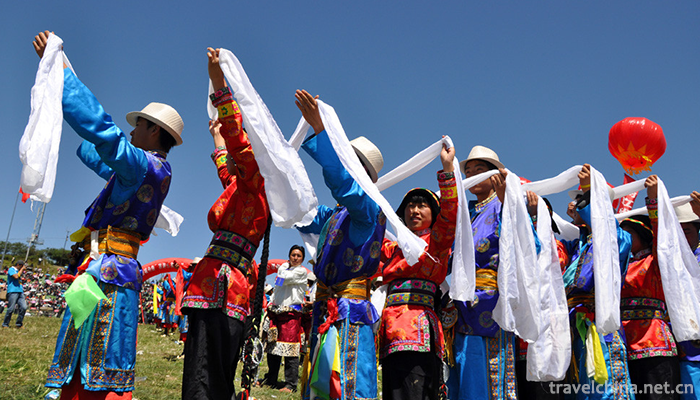
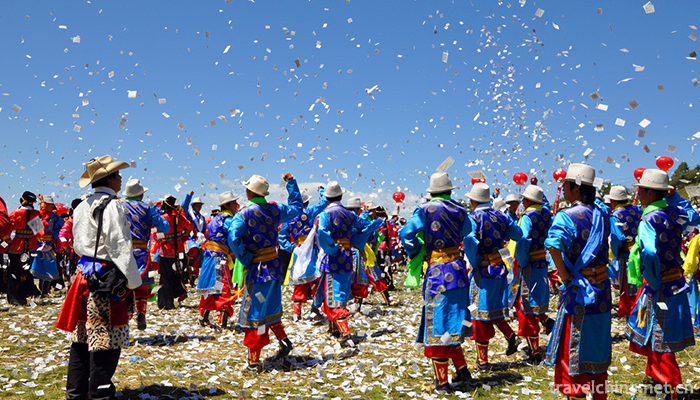
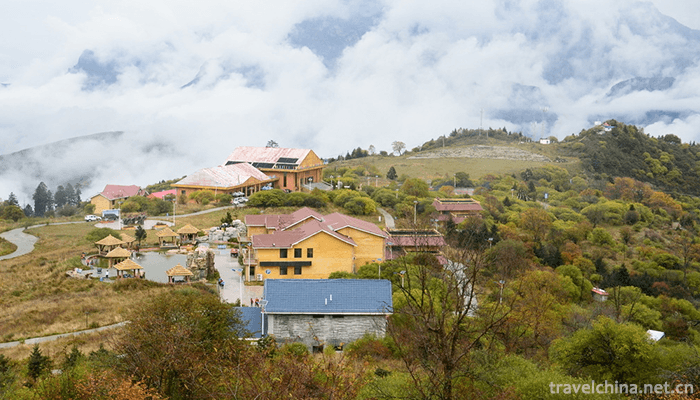
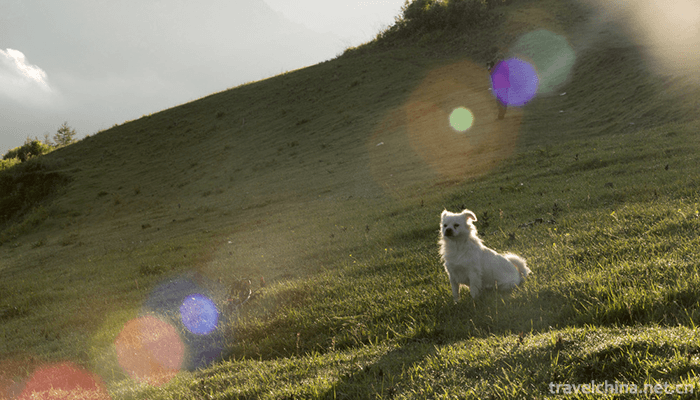
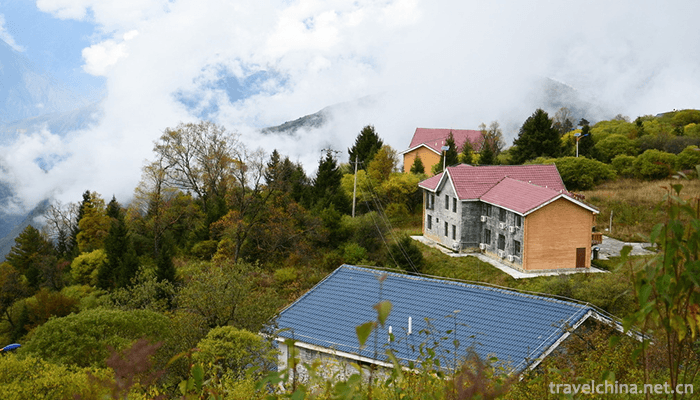
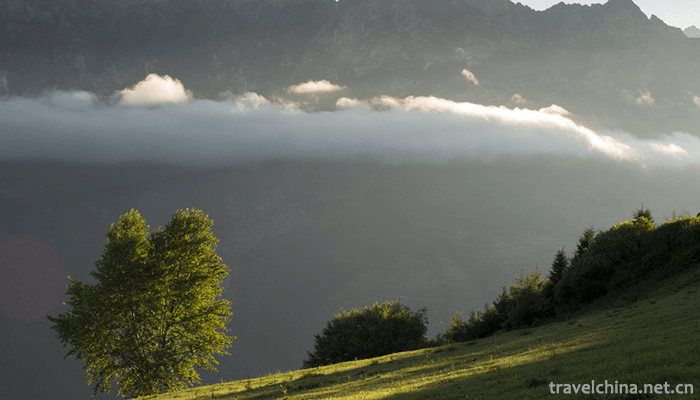
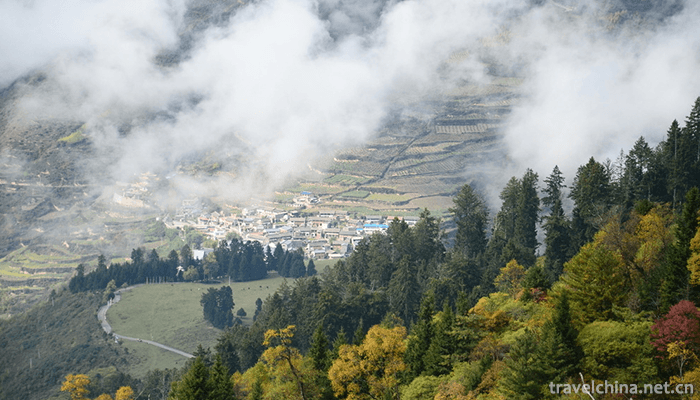
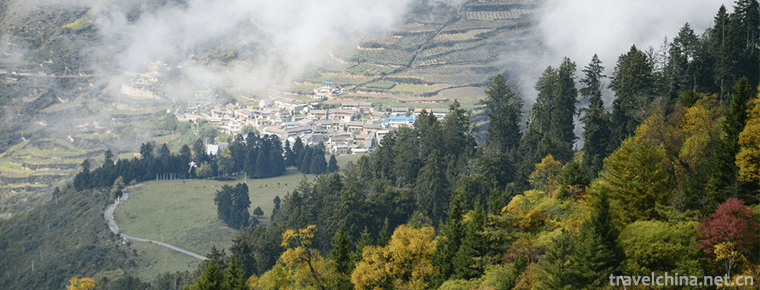
-
1.Qilihai National Wetland Park
Qilihai National Wetland Park is located in the northeast of Tianjin, located in Ninghe District of Tianjin, 30 kilometers away from Tianjin urban area, 100 kilometers away from Beijing and 40 kilomet
Time 2018-12-17 -
2.Ming Yue Mountain
Mingyue Mountain Tourist Area of Yichun City, Jiangxi Province, is located 15 kilometers southwest of Yichun Central City, with an area of 104 square kilometers.
Time 2019-02-07 -
3.Pingle Ancient Town
Pingle Ancient Town, located 93 kilometers southwest of Chengdu and 18 kilometers southwest of Qionglai City, is a famous historical and cultural town in China.
Time 2019-02-07 -
4.Shuimogou Scenic Area
Shuimogou Scenic Area, also known as Shuimogou Park, is named after Shuimogou in the scenic area. It is located in the eastern suburb of Urumqi, Xinjiang. Around 2000
Time 2019-02-13 -
5.Jiangxi opera
Gan Opera is a traditional opera which sings high-pitched, random-play, Kun Opera and other tunes in a multi-tone way. The dialect used is Gan dialect. Its origin and predecessor
Time 2019-04-30 -
6.Haicheng Hornplay
Haicheng trumpet opera, the local traditional drama of Anshan City, Liaoning Province, is one of the national intangible cultural heritage.
Time 2019-05-02 -
7.Jangar
Jianger Jianger, the local traditional folk literature of Xinjiang Uygur Autonomous Region, is one of the national intangible cultural heritage.
Time 2019-05-05 -
8.Glass Firing Techniques
Glass firing technology, Beijing Mentougou District, Shanxi Province, local traditional handicraft, one of the national intangible cultural heritage.
Time 2019-05-14 -
9.Napo Zhuang Folk Songs
Napo Zhuang, also known as "Heiyizhuang", is a unique ethnic group among the Zhuang people. It calls itself "Min", "Zhong", "Ouch". Now there are about 518,000
Time 2019-06-06 -
10.Wutaishan Buddhist Music
Wutai Mountain Buddhist music refers to the traditional Buddhist music that has been circulating for a long time in the temples of Wutai Mountain, the top four famous mountains of Chinese Buddhism. Wu
Time 2019-06-29 -
11.Beijing University Of Chemical Technology
Founded in 1958, Beijing University of Chemical Technology, formerly known as Beijing Institute of Chemical Technology, is a high-level university founded by New China for "training advanced chem
Time 2019-09-06 -
12.Introduction to Chinese embroidery
Embroidery, known as needle embroidery in ancient times, is a kind of technology that uses embroidery needle to guide color thread, embroiders the designed patterns on textiles, and forms patterns with embroidery traces. In ancient times, it was called "Juju" and "pinju".
Time 2020-12-12